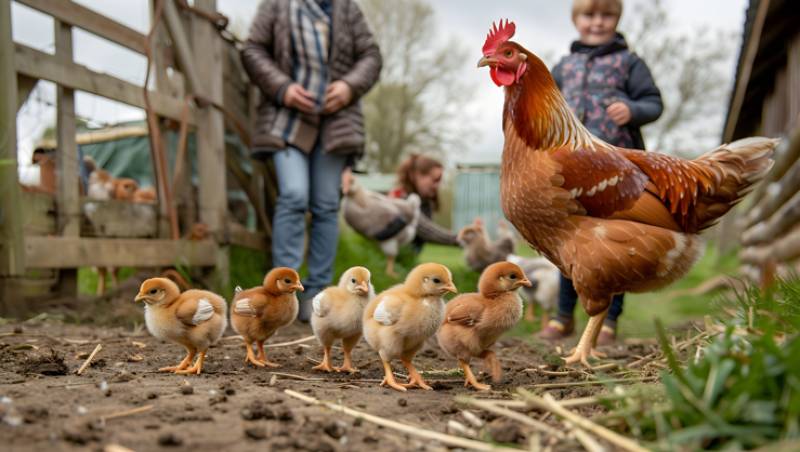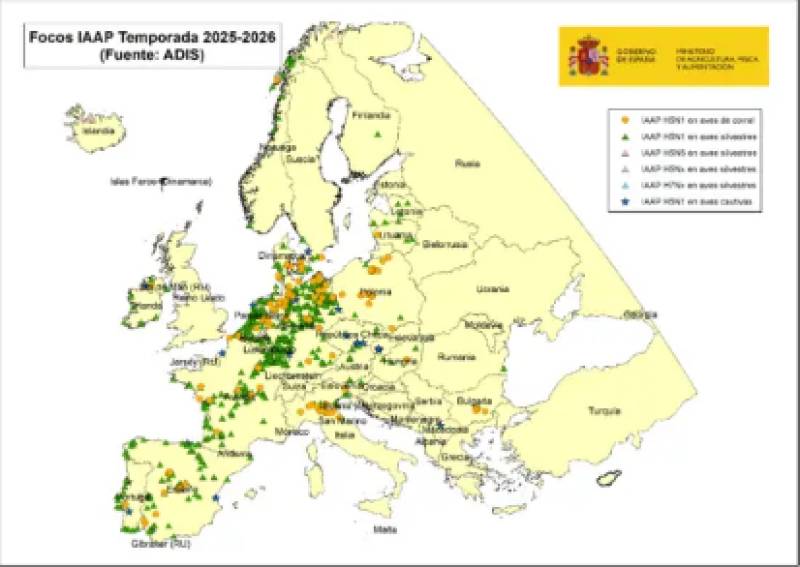Date Published: 07/11/2025
Spain orders poultry lockdown as bird flu cases surge
Outdoor farming has been banned across most of Spain from November 10
Spain has banned outdoor poultry farming across nearly the entire country in response to
a sharp rise in avian flu cases among wild birds. The new restrictions, announced by the Ministry of Agriculture on Thursday, come into force on November 10.
The move is designed to "prevent contact between migratory and domestic birds" during a period of high bird movement. Luis Planas's department is scrapping previous exceptions and rolling out tougher regulations in the midst of
the worst bird flu crisis Europe has ever seen.
If farmers can't comply with the outdoor ban, the rules allow local authorities to approve alternatives like bird netting "or any other device that prevents the entry of wild birds," as long as poultry are fed and watered indoors.
The Ministry also mentions "a shelter that prevents the arrival of wild birds and avoids their contact with the food or water intended for farm birds."
The affected areas are spread right across Spain.
What about humans? Bird flu, or avian influenza, comes from a virus in the Orthomyxoviridae family, part of the Influenza A group. The current strain sweeping through Europe is the H5N1 subtype, which is highly pathogenic. It has an incubation period of three to five days and can cause severe symptoms in birds including depression, appetite loss, reduced egg production, facial swelling, internal bleeding, pancreatitis and sudden death.
The European Centre for Disease Prevention and Control considers the risk to the general public low. However, it bumps that up to low-to-medium for people who work closely with birds, like poultry farm workers.
As for catching it through food, the risk is negligible thanks to EU hygiene and traceability standards. You can't get avian flu from properly cooked poultry, eggs or processed products.
Map of avian flu outbreaks in Europe
Since July 1, 139 cases of Highly Pathogenic Avian Influenza have been detected in EU poultry farms, plus 708 in wild birds and 33 in captive birds.
Spain has seen 14 outbreaks in poultry, putting it behind Germany with 59, Poland with 17 and Italy with 16. For wild birds, Spain has 68 cases, second only to Germany's 306 and France's 103. There have been five outbreaks in captive birds, one less than Germany.
The danger zones, and where the birds are soon to be on lockdown, cluster along major migration routes and coastal areas where wild birds and farms meet.
Andalucia, the
Valencian Community and Catalonia have the highest concentration of affected areas, particularly around wetlands, marshes and river deltas like Doñana, the Ebro delta and l'Albufera. These areas are hotspots because of their rich biodiversity and constant waterfowl presence.
Inland regions like Aragon, Castilla y León and parts of Castilla-La Mancha also have many municipalities on the list due to nearby wetlands, irrigation channels and migration corridors crossing the peninsula towards France.
Provinces including Huesca, Zaragoza, Palencia and Zamora show high numbers of classified locations.
Smaller but strategic areas in the Balearic Islands, Galicia, the Basque Country,
Murcia, Ceuta and Melilla are also included, confirming widespread risk across virtually all of Spain.
From November 10, farmers also can't keep ducks and geese alongside other poultry species. They're also banned from giving birds water from sources wild birds can access "unless that water is treated to ensure the inactivation of any potential avian influenza viruses."
Images: Freepik/ADIS
article_detail

|















